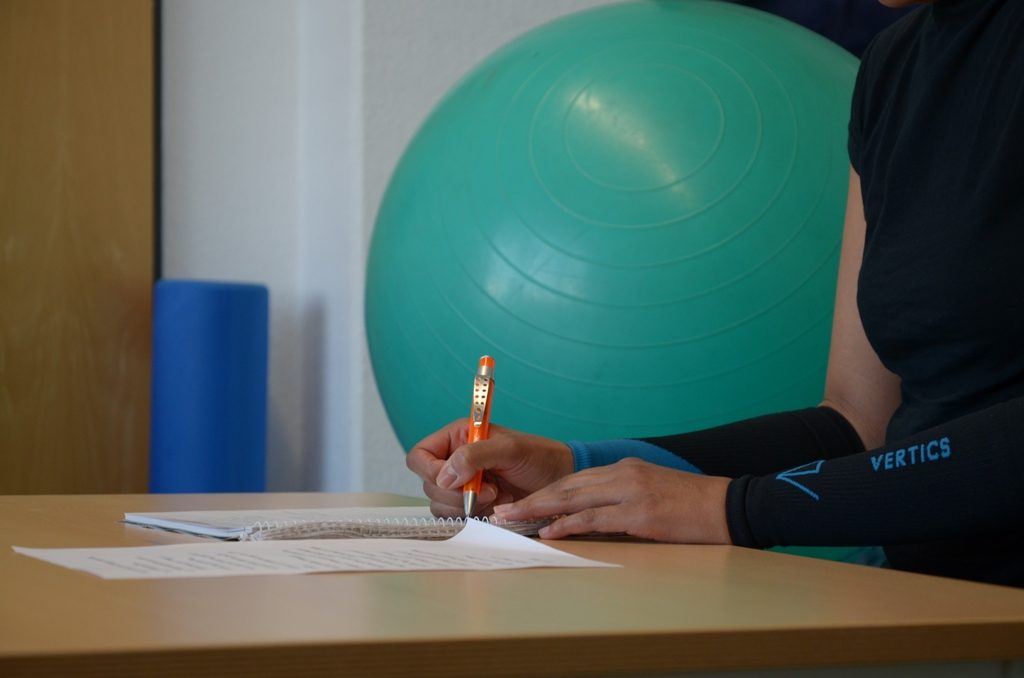Deutsch (German)
Français (French)
Italiano (Italian)
Español (Spanish)
VERTICS. Sleeves in occupational therapy and physiotherapy
Guest article about VERTICS. Sleeves in occupational therapy and physiotherapy (author and practice do not want to be named):
I got to know VERTICS. Sleeves at the Cologne Alpine Day 2017.
Immediately I had the thought that the VERTICS. Sleeves in my work as an occupational therapist in neurological rehabilitation. I work in an outpatient Rehabilitation facility with integrated practice.
Mr. Hummel immediately supported me with my idea when he gave me test equipment from VERTICS. sleeves in different sizes.
In neurologically affected patients with various diseases (e.g. condition after Appoplex (stroke), multiple sclerosis, polyneuropathy, Guillain-Barre syndrome), the VERTICS. sleeves.
Some of the sensorimotor problems that can occur in connection with neurological diseases can be described as follows:
- Fine motor deficits in targeted grasping and handling of objects.
- Problems related to force dosage, adaptation of movement to an object.
- Difficulties in the fine control and coordinated retrieval of movements.
- Dysregulation of muscle tension from too little resulting in unstable joints, to too much in the sense of spasticity.
- Paralysis (paresis) of the extremities in varying degrees.
- Limited perception of extremities as a result of sensory disturbances.
The VERTICS. Sleeves help to support movement precision and coordination, also because they give the body a stable reference point.
The VERTICS. Sleeves can be used to control muscle tension (reduction of hypertension).
They can be used to support wrist stability and thus ensure better power transmission.
In addition, the VERTICS. Sleeves via a clear pressure (proprioceptive stimulus), a better presence of the limb and a better integration in the body schema.
A patient suffering from MS with significant problems with regard to the Dexterity, coordination and hand strength the VERTICS. Sleeves especially in the afternoon in the home environment, in order to have better control, e.g. when preparing dinner. Food then no longer slips out of her hand as often. She also reports on a Improved endurance when using their hands.
A colleague from the planning department had been in pain and problems for a long time due to a Epicondylitis, now she wears the VERTICS. Sleeves if necessary when working on the PC to minimize the load. She has been pain-free for three months, also supported by medical treatment.
My colleagues and I particularly like it with the help of VERTICS. sleeves to be able to support our patients in transferring what they have learned into everyday life, because the facilitations described above increase the motivation to face the demands of everyday life.

